Wood offcuts, also known as wood waste or scrap wood, are the inevitable byproduct of woodworking processes. These leftover pieces often end up discarded and overlooked, contributing to unnecessary waste and environmental harm. However, with a strategic approach, these offcuts can be repurposed and utilized effectively to enhance wood production efficiency. For instance, imagine a scenario where a furniture manufacturing company routinely discards significant amounts of offcut materials on a daily basis. By implementing efficient strategies for preserving and maximizing wood offcuts, such as recycling or incorporating them into new products or projects, the company not only reduces waste but also taps into potential cost savings.
The concept of utilizing wood offcuts is gaining attention due to its economic and ecological benefits. In an era marked by increased environmental consciousness and sustainability concerns, finding innovative ways to minimize waste has become imperative. When properly managed, wood offcuts have the potential to reduce reliance on virgin timber resources while minimizing greenhouse gas emissions associated with their disposal. Moreover, from an economic perspective, companies that adopt effective practices in handling wood offcuts can experience significant savings in material costs over time. Thus, this article aims to provide guidance on how to preserve and maximize the utilization of wood offcuts efficiently within woodworking industries through various techniques like salv salvaging, repurposing, recycling, and incorporating them into new products or projects.
-
Salvaging: One of the primary techniques for utilizing wood offcuts is salvaging usable pieces that can be incorporated into future woodworking projects. This involves carefully sorting and storing offcuts based on their size, shape, and quality. By maintaining an organized inventory of salvaged wood, companies can easily access these materials when needed and reduce the need for purchasing new timber.
-
Repurposing: Another effective method is to repurpose wood offcuts into new products or components. Offcuts can be transformed into smaller items such as coasters, cutting boards, picture frames, or even decorative accents. By getting creative with design and craftsmanship, companies can add value to these leftover pieces and generate additional revenue streams.
-
Recycling: Wood offcuts can also be recycled through various processes to create new materials or energy sources. For example, they can be chipped or shredded to produce wood pellets used in biomass heating systems or converted into fiberboard for construction purposes. Some companies have even found innovative ways to incorporate wood waste into biofuel production.
-
Incorporating into new projects: Rather than discarding offcuts, they can also be intentionally integrated into new woodworking projects. These leftover pieces may not fit the specifications for a particular project but could still be utilized in smaller sections or hidden areas where appearance is less critical. By creatively incorporating offcuts into larger projects, companies can minimize waste while adding unique character and texture to their creations.
To effectively preserve and maximize the utilization of wood offcuts within woodworking industries, it is crucial to implement proper storage and organization systems. Creating designated areas for different types of offcuts according to their size and quality ensures easy accessibility when needed in future projects. Additionally, establishing partnerships or networks with other woodworking businesses or local artisans who specialize in repurposing scrap wood can provide opportunities for collaboration and resource sharing.
In conclusion, wood offcuts can be transformed from waste into valuable resources through salvaging, repurposing, recycling, and incorporating them into new projects. By adopting these strategies, woodworking companies can reduce waste, minimize environmental impact, and potentially realize cost savings while contributing to a more sustainable future.
Understanding Wood Offcuts
Understanding Wood Offcuts
Wood offcuts, also known as wood scraps or remnants, refer to the leftover pieces of timber that are generated during various woodworking processes. These offcuts can range in size and shape, from small trimmings to larger sections cut away from a board. While they may be seen as waste by some, understanding the value and potential of these wood offcuts is essential for preserving and maximizing wood production efficiency.
To illustrate this point, consider the case of a furniture workshop specializing in custom-made wooden tables. During the manufacturing process, numerous offcuts are created when shaping and milling the tabletops. Without proper utilization, these offcuts would ultimately end up discarded or burned as fuel. However, by recognizing their significance, the workshop owner decides to explore alternative uses for these smaller wood pieces.
One approach to utilizing wood offcuts efficiently involves considering their environmental benefits. By repurposing these remnants instead of disposing of them, we contribute to reducing overall waste generation and conserving valuable resources. Additionally, embracing sustainable practices aligns with growing consumer demands for eco-friendly products and services.
- Reduction: Minimizing landfill contributions
- Creativity: Unlocking new design possibilities
- Cost-effectiveness: Maximizing material usage without additional expenses
- Sustainability: Demonstrating commitment towards environmentally conscious practices
Moreover, it is worth noting how different industries can leverage wood offcuts effectively through responsible management strategies. The following table exemplifies diverse sectors where these remnants find purpose:
| Industry | Utilization |
|---|---|
| Architecture | Accent walls or decorative panels |
| Construction | Flooring underlayment or formwork support |
| Crafts & DIY projects | Small-scale sculptures or picture frames |
| Energy production | Biomass fuels for heating systems |
By understanding the value and potential of wood offcuts, businesses can adopt innovative approaches to maximize their utilization while minimizing waste generation. This mindset shift sets the stage for identifying the various opportunities that lie within these seemingly insignificant remnants.
Transitioning seamlessly into the subsequent section on “Identifying the Value in Wood Offcuts,” it becomes apparent how delving further into this topic allows us to explore practical methods of harnessing the hidden benefits of these discarded wood pieces.
Identifying the Value in Wood Offcuts
Understanding Wood Offcuts and Identifying the Value in Wood Offcuts have provided us with a comprehensive understanding of how wood offcuts can be utilized effectively. In this section, we will delve deeper into the various strategies that can be employed to preserve and maximize wood production efficiency.
To illustrate the significance of utilizing wood offcuts efficiently, let’s consider a hypothetical scenario: A furniture manufacturing company generates a significant amount of wood waste from their production process. Initially, they treated these offcuts as mere scraps without recognizing their potential value. However, after implementing strategies to optimize their usage, they were able to reduce waste and increase profitability by incorporating offcuts into new products or selling them to other industries for further utilization.
One effective strategy is adopting an organized storage system specifically designed for wood offcuts. By categorizing and storing offcuts based on size, type of wood, or potential future use, manufacturers can easily locate suitable pieces when needed instead of wasting time searching through piles of random scrap materials. This not only enhances productivity but also reduces material wastage significantly.
Another approach involves implementing efficient cutting techniques during the initial stages of woodworking projects. By strategically planning cuts and considering the dimensions required for subsequent projects or smaller items like decorative accents or accessories, craftsmen can minimize unnecessary waste generation. Moreover, using computer-aided design (CAD) software can assist in optimizing cut plans while ensuring accurate measurements and minimal loss of raw materials.
Investing in advanced machinery capable of processing smaller-sized offcuts opens up opportunities for creating additional value-added products. For instance, companies could utilize CNC routers or laser-cutting machines to transform offcuts into intricate designs for home décor items such as coasters or wall art. These innovative applications not only generate revenue but also cater to niche markets seeking unique handmade creations.
By employing these strategies and embracing a sustainable mindset towards wood offcut handling and management, businesses can enhance overall efficiency while reducing environmental impact:
| Strategies for Maximizing Wood Offcut Utilization |
|---|
| 1. Implement an organized storage system |
| 2. Optimize cutting techniques |
| 3. Invest in advanced machinery |
| 4. Explore innovative applications |
As we delve into the subsequent section on Optimizing Wood Offcut Usage, we will further explore ways to capitalize on these strategies and maximize the potential of wood offcuts within the woodworking industry. Through a combination of thoughtful planning, efficient utilization, and creative innovation, manufacturers can continue to unlock the hidden value present in every piece of wood offcut they produce.
[Continue reading: ‘Optimizing Wood Offcut Usage’]
Optimizing Wood Offcut Usage
Section H2: Optimizing Wood Offcut Usage
Building upon our understanding of the value inherent in wood offcuts, we now delve into strategies to optimize their usage. By implementing these practices, businesses can not only reduce waste but also maximize wood production efficiency.
One effective way to optimize wood offcut usage is through careful planning and organization of the manufacturing process. Let’s consider a hypothetical case study where a furniture manufacturer aims to minimize waste and increase productivity. By identifying common dimensions for their products, they can determine standard lengths for different types of wood materials, thus reducing the number of offcuts generated during fabrication. Additionally, adopting efficient cutting patterns that make use of as much material as possible will further enhance utilization rates.
To ensure successful implementation of optimization efforts, here are some key considerations:
- Material selection: Choose appropriate wood species with desirable properties such as strength or aesthetic appeal.
- Precision machinery: Invest in high-quality equipment capable of accurate cuts, minimizing errors and maximizing yield.
- Inventory management: Maintain an organized inventory system to track available stock and prioritize using existing offcuts before cutting new pieces.
- Collaboration and communication: Foster open lines of communication between design teams, craftsmen, and suppliers to align on requirements and potential opportunities for utilizing offcuts effectively.
Table: Benefits Gained by Efficient Wood Offcut Usage
| Benefit | Description |
|---|---|
| Reduced waste | Optimal usage of wood offcuts minimizes discarded material, leading to cost savings and environmental sustainability. |
| Increased profitability | Maximizing production yields lowers expenses associated with purchasing additional raw materials. |
| Enhanced resource management | Utilization of all available resources reflects responsible forest stewardship while ensuring long-term availability. |
| Improved customer satisfaction | Emphasizing sustainable practices resonates with customers who appreciate environmentally conscious brands. |
In conclusion, optimizing wood offcut usage through strategic planning and implementation can yield significant benefits for businesses. By considering factors such as material selection, precision machinery, inventory management, and collaboration, manufacturers can reduce waste, increase profitability, manage resources effectively, and enhance customer satisfaction.
Having explored the various ways to optimize wood offcuts within manufacturing processes, we will now turn our attention to creative applications that make use of these valuable remnants.
Creative Applications for Wood Offcuts
Section H2: Creative Applications for Wood Offcuts
Building upon the concept of optimizing wood offcut usage, this section delves into the myriad creative applications that can be explored to maximize the potential of these often overlooked remnants. By thinking outside the box, innovative solutions can not only enhance resource efficiency but also add value to otherwise discarded materials.
Exploring Possibilities:
One fascinating example is the case study of a furniture manufacturer who implemented an imaginative approach to utilizing their wood offcuts. Instead of simply discarding them or using them for firewood, they repurposed the smaller pieces as intricate decorative inlays for their high-end bespoke designs. This ingenious application not only minimized waste but also enhanced the aesthetic appeal and uniqueness of each piece.
To further inspire creativity when it comes to wood offcuts, consider some alternative uses that may elicit an emotional response from both craftsmen and environmental enthusiasts alike:
- Crafting one-of-a-kind jewelry pieces adorned with small wooden accents
- Designing eye-catching wall art by arranging variously shaped offcuts into visually appealing patterns
- Constructing durable cutting boards or serving trays out of larger offcut sections
- Creating eco-friendly toys with smooth-sanded wooden blocks in different shapes and sizes
Expanding on Potential:
In addition to exploring alternative uses, it is essential to highlight how diverse wood offcuts can be in terms of size, shape, and even type of material. To illustrate this point effectively, refer to the following table showcasing various types of wood commonly used in manufacturing processes alongside their corresponding dimensions:
| Type of Wood | Dimensions (in inches) |
|---|---|
| Oak | 1x1x4 |
| Walnut | 0.5x2x8 |
| Maple | 3x3x6 |
| Cherry | 2x4x12 |
By embracing such diversity and combining multiple offcuts, craftsmen can create intricate designs and unique pieces that are distinctively different from traditional woodworking projects.
Continuing on the path of maximizing efficiency in wood production, the subsequent section will delve into practical strategies for minimizing waste. By implementing these approaches alongside creative applications for wood offcuts, a holistic approach to resource utilization can be achieved.
Minimizing Waste in Wood Production
Section H2: Creative Applications for Wood Offcuts
Transitioning from the previous section discussing creative applications for wood offcuts, it is evident that utilizing these leftover pieces of wood not only promotes sustainability but also opens up a world of possibilities. In this section, we will explore practical strategies to minimize waste in wood production and maximize efficiency.
Consider the case study of a small furniture manufacturer looking to reduce their environmental impact while optimizing their production processes. By implementing innovative techniques to make use of wood offcuts, they were able to achieve remarkable results. Not only did they significantly decrease the amount of waste generated in their operations, but they also discovered new revenue streams by creating unique products from what was once considered scrap material.
To effectively minimize waste and enhance production efficiency, there are several key strategies that can be employed:
- Standardize cut sizes: Implementing standardized dimensions for cutting wood can help reduce offcut generation and streamline the manufacturing process.
- Design with offcuts in mind: Architects and designers can incorporate offcuts into their plans from the initial design phase, maximizing resource utilization and reducing waste.
- Establish partnerships: Collaborating with other industries or businesses that can utilize specific types of offcuts creates symbiotic relationships where one company’s waste becomes another’s valuable resource.
- Educate employees: Providing comprehensive training on efficient material usage ensures that all staff members understand the importance of minimizing waste and actively participate in achieving sustainable practices.
Table 1 below highlights some potential uses for different types of wood offcuts:
| Type of Wood | Potential Uses |
|---|---|
| Oak | Decorative accents such as paneling or picture frames |
| Pine | Crafting small wooden items like coasters or trinket boxes |
| Walnut | Creating intricate veneer patterns for furniture |
| Maple | Producing kitchen utensils or cutting boards |
Embracing creative solutions when working with wood offcuts not only benefits the environment but also presents opportunities for innovation and cost savings. By implementing these strategies, businesses can reduce waste, increase profitability, and contribute to a more sustainable future.
Transitioning into the subsequent section on “Tools and Techniques for Efficient Wood Offcut Management,” we will explore practical steps that can be taken to further enhance production efficiency while minimizing waste.
Tools and Techniques for Efficient Wood Offcut Management
Section H2: Tools and Techniques for Efficient Wood Offcut Management
Transitioning from the previous section, where we explored the importance of minimizing waste in wood production, let us now delve into various tools and techniques that can be employed to effectively manage wood offcuts. By adopting these strategies, businesses can maximize their production efficiency while reducing environmental impact.
To illustrate the practical application of these tools and techniques, consider a hypothetical case study involving a furniture manufacturing company. This company specializes in crafting bespoke wooden pieces but has been facing challenges with excess wood offcuts leading to increased costs and wastage. By implementing the following approaches, they were able to optimize their operations:
-
Inventory management:
- Regularly assess inventory levels and identify commonly used dimensions or sizes.
- Prioritize using offcuts for future projects based on demand analysis.
- Maintain an organized storage system to easily locate specific types of offcuts.
-
Repurposing and recycling:
- Explore creative ways to repurpose larger offcuts into smaller components or accessories.
- Partner with local artisans or organizations that specialize in upcycling materials.
- Establish connections with recycling facilities to ensure proper disposal of unusable offcuts.
-
Collaborative design processes:
- Encourage designers to incorporate modularity in their designs, allowing for efficient utilization of different-sized offcuts.
- Foster collaboration between design teams and production staff to develop innovative solutions for utilizing offcuts effectively.
-
Technological advancements:
- Invest in computer-aided design (CAD) software that enables optimized material nesting layouts for cutting patterns.
- Implement precision cutting machinery equipped with automated optimization algorithms to minimize waste during production.
Table: Cost-Saving Potential through Wood Offcut Management Strategies
| Strategy | Potential Savings |
|---|---|
| Inventory management | Reduced purchasing expenses |
| Repurposing and recycling | Lower disposal costs |
| Collaborative design processes | Increased material efficiency |
| Technological advancements | Decreased wastage |
By adopting these tools and techniques, the furniture manufacturing company experienced a significant reduction in waste generation, leading to cost savings and improved overall production efficiency. This demonstrates how proactive wood offcut management can positively impact both economic and environmental factors.
In summary, efficient wood offcut management is crucial for businesses seeking to optimize their operations while minimizing waste. Through inventory management, repurposing and recycling initiatives, collaborative design processes, and technological advancements, companies can achieve substantial cost savings and contribute to sustainable practices within the industry. Embracing these strategies enables businesses to maximize their use of available resources while reducing their ecological footprint.

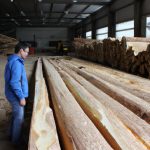
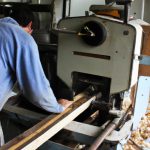
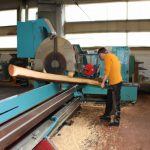


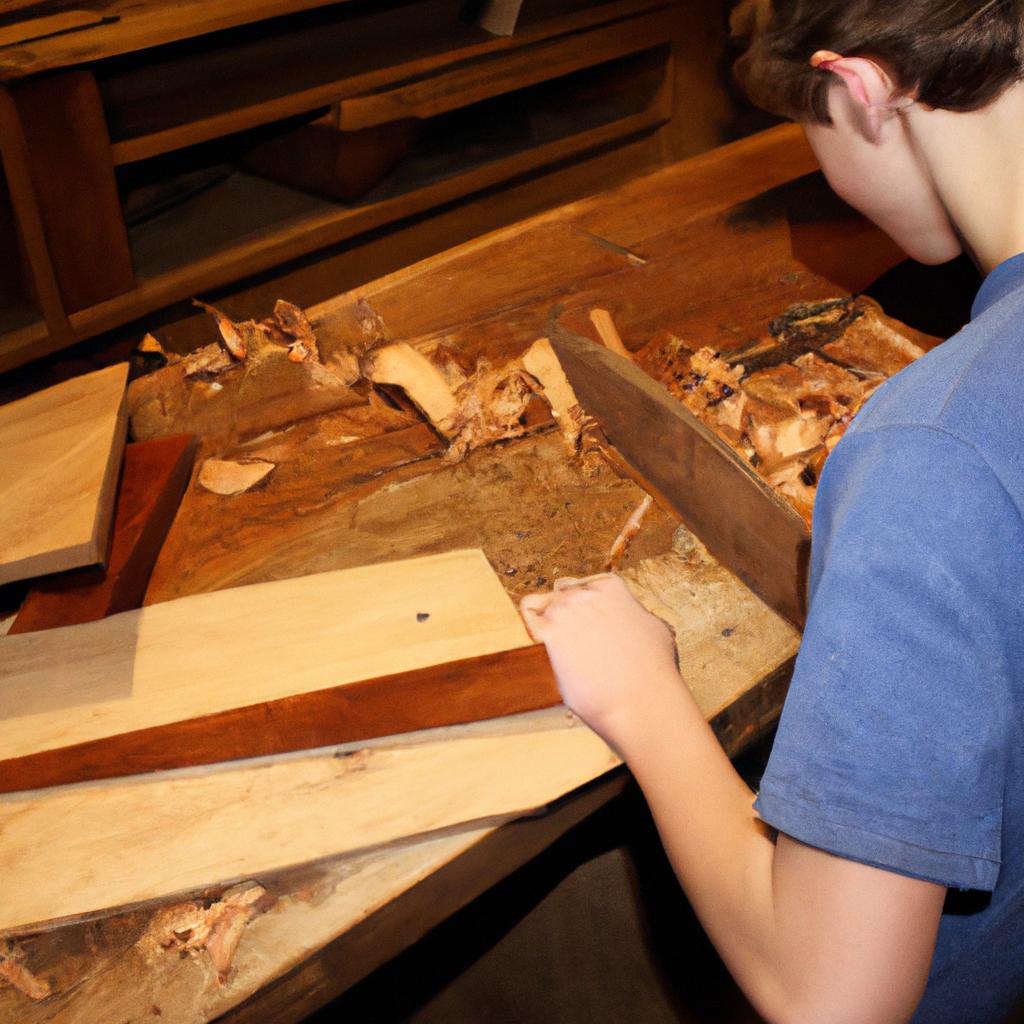
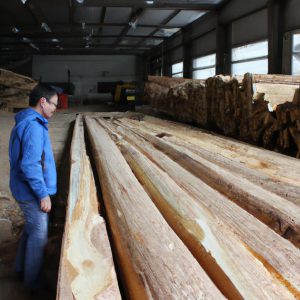
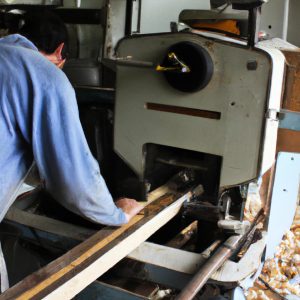
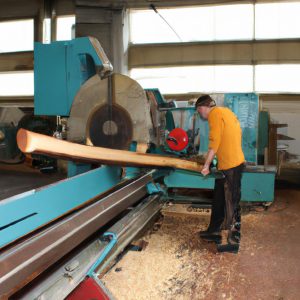
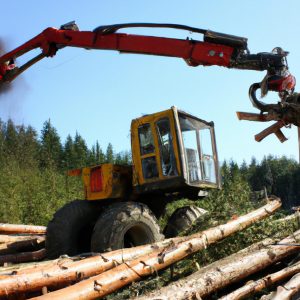
More Stories
Wood Chips: An Essential Component for Wood Production and Preservation
Wood Dust: A Comprehensive Guide to Wood Preservation and Safety Measures in Wood Production
Bark in Wood Production: Wood Preservation